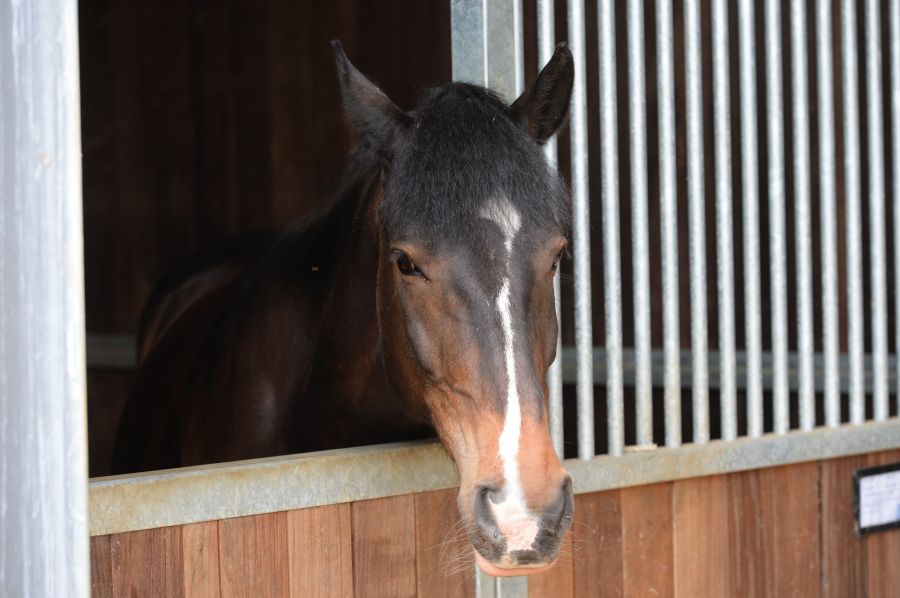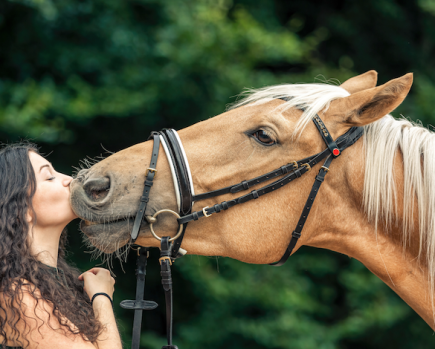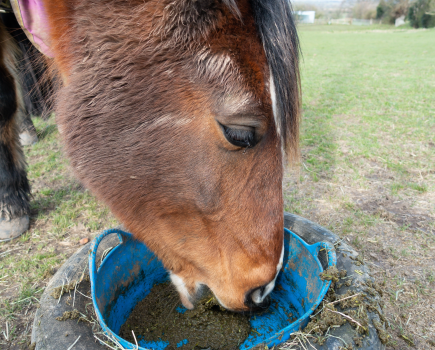Horses owners are all aware of the dreaded C word: colic. But what can cause it, and how do we reduce the risk of our horses suffering from it? Vet Amelia Stevens DrMedVet MRCVS breaks down everything you need to know about impaction colic.
An impaction is a blockage of the intestine, typically due to the accumulation of ingesta (partially digested feed material) within the gut, resulting in a blockage. The impacted food material places pressure on the gut wall and causes gas to build up around the obstruction. This stimulates sensitive nerves in the gut wall, called stretch receptors, which send pain signals to the brain. It is these pain signals that result in a horse displaying signs of abdominal discomfort – the signs of colic vets and owners recognise.
Impaction colic is particularly prevalent during the winter months and accounts for between 8% and 10% of all colic cases.
Over time, the impacted food material becomes progressively harder and direr, and therefore more difficult to shift. Most impactions can be resolved with medical treatment, such as oral fluids and painkillers, but occasionally surgical intervention is needed to unblock the intestine.
Early detection of impact colic is key, but even better is to try to reduce the chance of it occurring in the first place. Knowing how and why impacts occur makes it far easier to identify both possible solutions and the management changes we can implement to minimise the risk.
Cause and solution
The horse’s gut is long and convoluted, with various narrow sections and bends. Impactions typically occur at these locations where the passage of food slows down.
The pelvic flexure is one such site. It’s a hairpin-like kink found on the left side of the abdominal cavity near the flank, where the large colon turns back on itself and narrows, and a common location for impaction colic.
As we look at other risk factors associated with impaction colic, it becomes easier to understand why horses are so prone to this type of colic during the winter months.
Lack of movement
Shorter daylight hours, poached fields, or lack of winter grazing inevitably result in reduced turnout and exercise time. Movement and exercise are essential in stimulating peristalsis – the contractions of smooth muscle in the gut wall that move food along the digestive tract.
As our horses and ponies spend more time stabled, their guts can become a little sluggish, making impaction colic more likely as the passage of gut contents slows down.
Water is absorbed from food as it passes along the intestine, so the longer food stays in one section of gut, the more water is reabsorbed and the direr the ingesta becomes.
Leaving horses turned out as much as possible will ensure their digestive system is stimulated and kept motile. Horses in good condition can withstand very low temperatures, provided they have access to some form of shelter, so unless grazing is restricted, many horses will be happier and healthier if left outdoors.
Reduced fluid intake
Insufficient water can contribute to impactions in two ways. First, a lack of dietary moisture quite literally dries out the gut contents, increasing the risk of a blockage. Second, dehydration lowers blood volume. Because of this, blood is diverted away from the gut to vital organs such as the heart and kidneys, ensuring they receive an adequate supply of oxygen, water, and nutrients. As blood flow to the gut is reduced, the gut becomes less active and the passage of food along the intestinal tract slows down.
Unfortunately, horses are notoriously fussy drinkers. As the adage goes: ‘you can lead a horse to water, but you can’t make them drink’. However, we do need to make sure the horse can firstly get to the water by breaking any ice that forms on buckets, troughs and automatic drinkers, and we can encourage them to drink.
Cold water is particularly off-putting to many equines, so adding a little warm water or certain flavourings may help to encourage fluid intake.
Dietary changes
Another change associated with winter is the switch from fresh to preserved forage, typically hay or haylage, as grass growth slows and fields turn to mud.
Horses are hindgut fermenters and are uniquely adapted to digest fibrous plant material with the help of microbes in the hindgut. Rapid changes in any feed material changes the balance of microbes in the hindgut and alters fermentation patterns. This results in increased gas production and changes the normal fluid exchange within the colin, increasing the risk of gassy (tympanic) and impaction colic.
Different sources of forage also supply dietary moisture in varying amounts. Fresh grass has a moisture content of around 80%. Compare this to hay, where the moisture content is reduced to around 12% to prevent spoilage, and we can soon see why fluid requirements for horses often increase in winter, despite the cooler temperatures.
As discussed above, the drier the gut contents, the increased risk of impaction. So, as well as ensuring any changes in forage are made gradually (the horse’s digestive system ideally needs about 14 days to adapt to changes in diet), ensure there’s plenty of fresh water available, particularly if your horse is moving onto forage with a lower moisture content.
It’s easy to feel the inclination to increase concentrate and grain rations to meet the increasing energy demands of keeping warm. However, excess concentrates are more likely to upset the delicate balance of bacteria in the hindgut, potentially resulting in hindgut acidosis or diarrhoea.
In very bleak conditions, additional forage is a better way to providing your horse with extra calories for heat production, as fermentation in the hindgut generates heat to help maintain body temperature.
Dental disease
Chewing is the first phase of the digestive process and is vital for ensuring proper digestion of fibrous feeds.
Older equines often have poor dentition as diastemata (gaps between teeth) develop and teeth are lost. Improperly chewed food, coupled with reduced gastrointestinal motility, means an increased risk of choke and impaction. Ensure teeth are in good condition by having regular dental checks (at least annually) carried out by your vet or a qualified equine dental technician.
In some cases, dietary alterations may be necessary to minimise the risk of impactions. Forage replacers, such as hay cubes or pellets, can be fed in the same quantity as your normal forage source if your horse is struggling to chew properly. Look to offer around 2% bodyweight total feed per day for maintaining current condition (so 10kg of total food for a 500kg horse).
Access to forage is still important, however, as the chewing action is beneficial to reducing the risk of gastric ulceration, further dental issues, and boredom.
Check out our Christmas subscription offer – the perfect gift for a horse lover!









